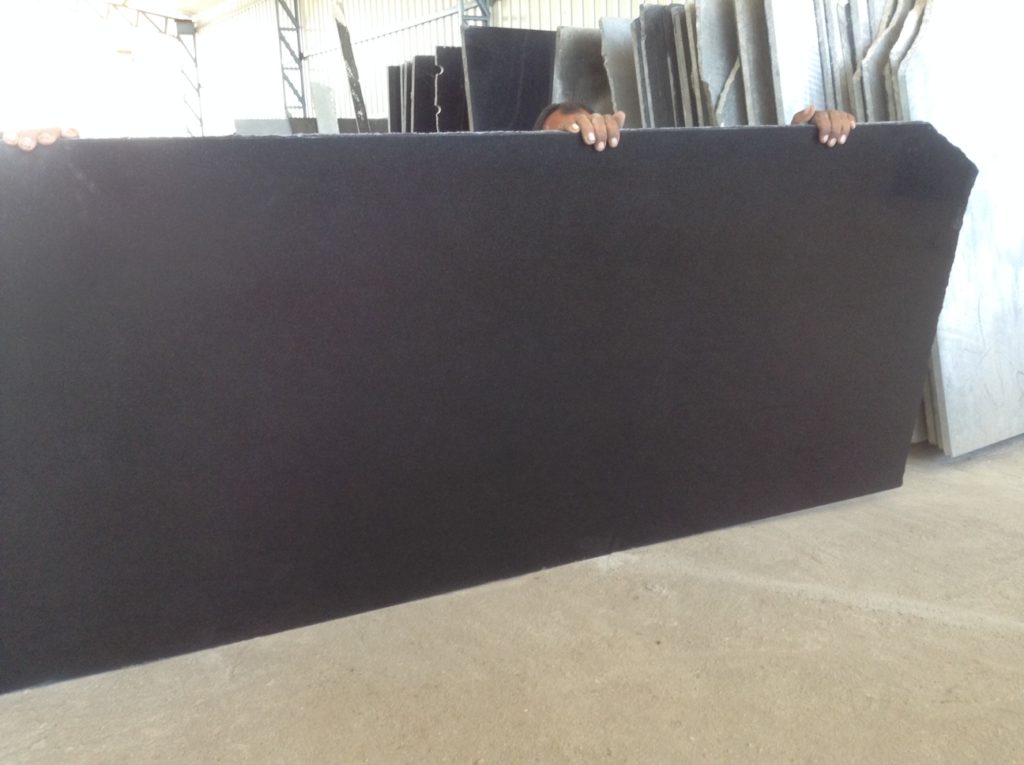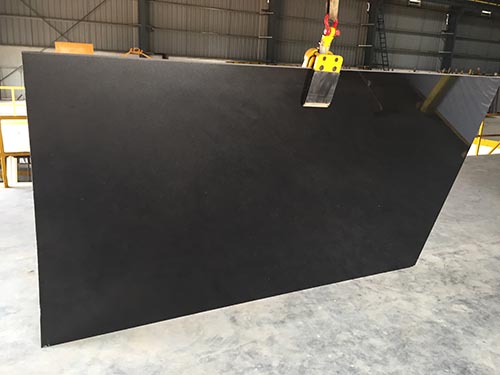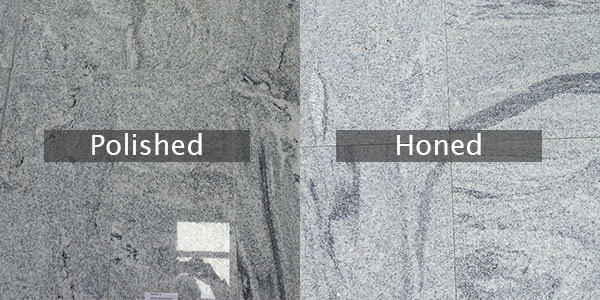Blog
Honed vs. Polished Granite – What to choose?
Though Mother Nature has bestowed us with a wide range of natural stones, granite is known to be the best among them. Thanks to its striking appearance, amazing functional characteristics, and unmatched durability, granite always remains the most sought-after construction stone for both residential and commercial architectural projects worldwide. But, it doesn’t make sense to use a granite slab or block directly in a project and it needs to be processed at various levels to attain the desired look and functionality.
Finishing is a crucial aspect of granite processing as this is what gives a granite slab its look and character. This is why different types of finishes are given to a granite slab given its exact application and purpose. Some of the popular granite finishes are honed, flamed, polished, lepatora, bush-hammered, brushed, and leather. The application of a specific finish depends on the use of the granite slab in a project. Among them, the two most commonly applied finishes are HONED and POLISHED. If you are confused between these two, get to know them in detail below.
What is a Honed Finish Granite Slab?
A granite slab with an honed finish tends to have a subtle, lustreless, or satin look that’s non-reflective. They support the granite stone’s original color tone and depth and are velvety to the touch. They could be described as subtle or even casual by some. Smooth surfaces, such as those found on honed stone, can give the appearance of lighter or “grayed out” granite. As the stone isn’t shiny, natural faults can be concealed more easily with an honed finish.

What is Polished Finish Granite?

On the other hand, a polished granite slab tends to have a glossy surface appearance. This type of finish is quite common in applications like tabletops, countertops, etc. The glossy, highly reflecting surface highlights the darker tones in the stone. Because of the way its brilliance contrasts with kitchen cabinets, polished granite, which became popular in houses in the 1980s, is today one of the most sought-after finishes. Kitchens with polished granite worktops often have a central point that stands out when paired with wood cabinets.
Difference Between Honed and Polished Granite
You might be wondering what honed finish is for granite but you probably know about polished granite. Only the manner in which the rock is finished is the difference between polished/honed granite so they are essentially identical. A particular process is followed for granite which has either honed or polished such that they are given different appearances.
Granite stone’s rough side is polished using coarse abrasive pads, which put pressure on it (as they rub against it) so as to grind and buff its surface. If they stop polishing before your stone gets shiny, this means there will be no polished finish but rather a honed one – with less detailed buffing or grinding processes involved at all. It means we can actually use a lower-grade cushioning material for them but still maintain their quality in both cases when film develops which is what help for sealing them again after cleaning from oils.
LOOKS
Granite that has been polished and honed comes in a range of colors, including off-white, gray, black, and brown. Polished granite is often associated with glossy kitchen worktops. On the other hand, the refined style, coupled with earthy hues, darker kitchen designs, and interior design that embraces an industrial vibe with natural stone and cement, has only lately been fashionable.

POLISHED
Granite, whether polished or honed, enhances the value of any area it is in. Polished granite has a glossy, classic, and refined appearance that gleams and whispers luxury. Its capacity to reflect light makes any space more cheerful. The natural brilliance of the stone’s hue is enhanced with polished granite.
HONED
Granite countertops with honed finish carry a more innate, submissive appearance that exhibits a more comforted texture in comparison to the glossy surface of polished granite. One can expect an easier, velvety look and touch without heavy exposure to the granite’s original color or texture. This granite stone tends to reveal a matte finish or less-glossy finish.
Stain Resistance
Conversely, polished granite is a great material for high-traffic areas since it is almost immune to weather and chemical deterioration. The majority of polished granite countertops are so dense—especially black ones—that stains are nearly hard to remove. A specialized granite cleaner will preserve the stone’s high sheen, condition it, and safeguard the sealer.
Honed granite surfaces show more signs of dirt, oil, and handprints. Water and foods heavy in fat and acidity are particularly prone to etching on polished granite surfaces when left on them for extended periods of time. While black spots can be lessened using color enhancers, it’s advisable to clean counters often and dab them dry.
Scratch Resistance
Granite is a hard stone with minimal scratches. In contrast, polished granite is better at hiding flaws like scratches, but honed granite is a little softer and more prone to etching because of its porosity. Always wipe up spills as soon as you can to stop liquids from soaking into the stone’s surface to avoid scratches and etching.
Steer clear of abrasive chemical cleaners and never use steel wool or brushes with stiff bristles to clean a granite countertop. Paper towels and microfiber cloths are gentler and leave no scratches on the stone’s surface. Use cutting boards wherever possible and set hot pots and pans on trivets when making food.
Design Preferences
Polished granite is known for its sleek, slick, and high-gloss refinement. Most people are aware of its capacity to reflect light in the same way as a mirror and how it instantly improves living areas. For many years, polished granite worktops have adorned double-spreads of home and décor magazines, exhibiting the complete vibrancy of the stone’s inherent
hue.
Neutral colors and natural materials have come back into favor as the globe has grown more environmentally conscious; natural stone, concrete, and wood are common in many new construction projects and contemporary residences. Honed granite has a subtle, modern appearance that is in keeping with these days’ fashions in design.
Stated Purpose
A polished surface will perform best in a heavy traffic location where your countertop will be located because it requires less meticulous upkeep. This kind of surface would be useful for someone who cooks a lot, has a large family with little children, or needs a strong workspace.
Honed granite, on the other hand, will be a good option if you can keep up a strict cleaning and sealing regimen. Anywhere can use either finish; it just depends on your level of upkeep commitment.
The Conclusion
Granite that has been polished and honed is still quite robust and long-lasting. Granite is a high-performing stone that, regardless of finish, keeps its appearance and feel if cared for and regularly sealed. A polished, glossy countertop might be more in line with the kind of home decor chosen by someone designing a contemporary apartment, while someone else might prefer the sleek, modern appearance that honed granite offers.
